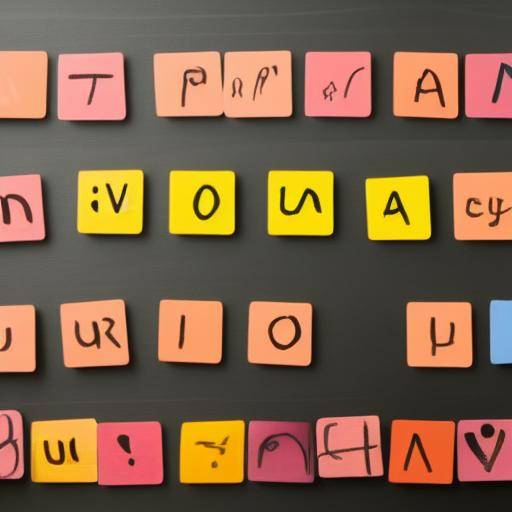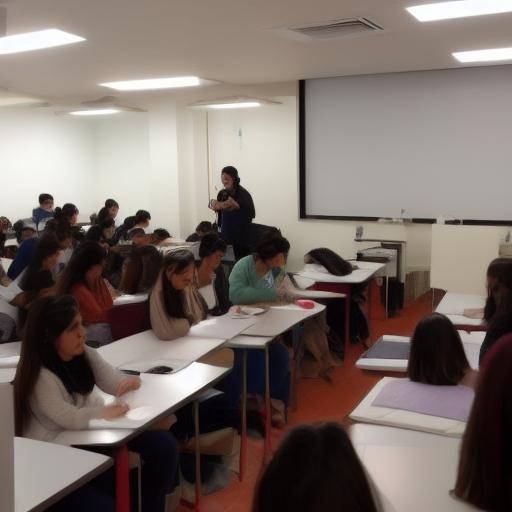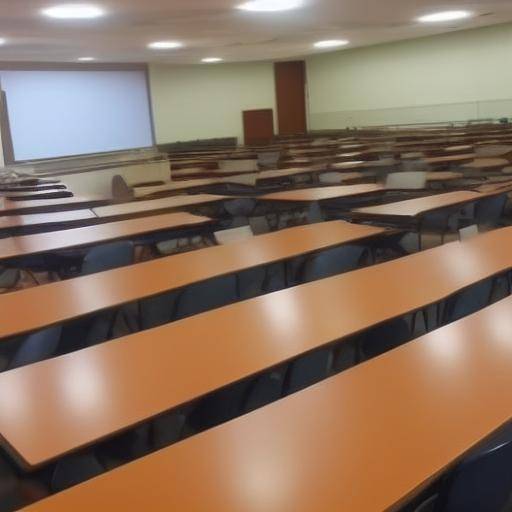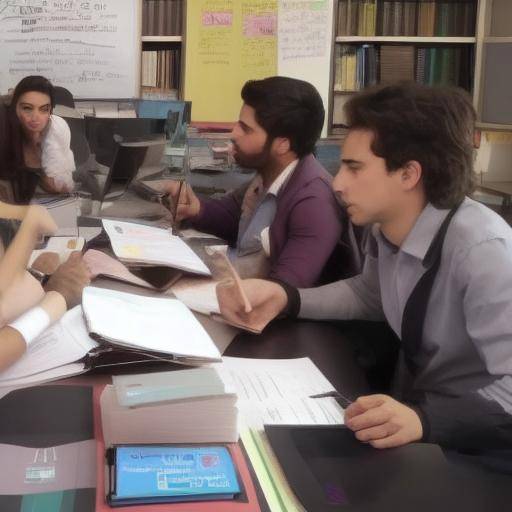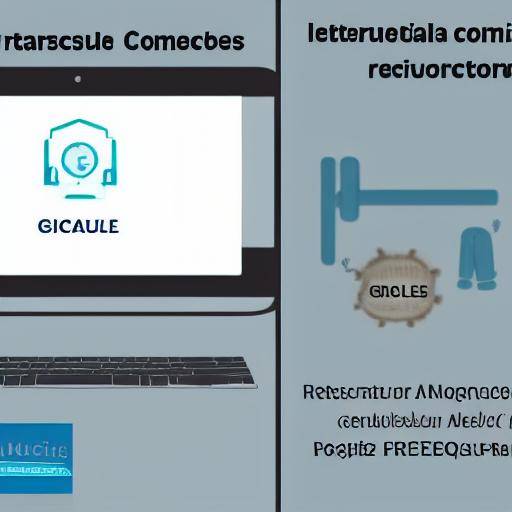
Teamwork is fundamental to the success of any company or organization. However, it can often be difficult to foster collaboration, effective communication and cohesion within a team. This is where play activities come into play. In this article, we will explore how to use playful activities to improve teamwork, providing a deep insight into its importance, benefits and practical applications. From its historical origin to future trends, you will discover how these activities not only strengthen group dynamics, but also promote performance and satisfaction in the working environment.
Introduction
Teamwork is essential in any working environment, as it allows the use of individual strengths to achieve collective goals. However, the construction of effective equipment goes beyond simply bringing together a group of people. It requires effective strategies to promote cooperation, confidence and the resolution of joint problems. The play activities, also known as group dynamics or collaborative games, offer an alternative and effective approach to strengthening teamwork. Throughout this article, you will know how these activities can transform labor dynamics, generating positive impacts both individually and collectively.
History and Background
The play activities have their roots in the concept of experiential learning, which is based on the idea that you learn better through practical and participatory experience. This approach has been applied in different contexts throughout history, from education to the development of equipment in business environments. During the 1950s, the game became an integral component of training in companies and organizations, and has since evolved to adapt to the changing demands of the world of work.
The play activities not only foster collaboration and problem solving, but also promote creativity, effective communication and the development of interpersonal skills. As companies have recognized the value of a cohesive team, these activities have become an invaluable resource for improving performance and the working environment. A series of studies and success stories support the effectiveness of these strategies, supporting their relevance in different working contexts.
Deep analysis
The play activities offer a variety of tangible benefits to improve teamwork. From the development of confidence to the stimulation of creativity and problem solving, these strategies generate a positive impact on the dynamics of work. Employees involved in play activities experience an increase in motivation, team cohesion and job satisfaction. In addition, these activities provide a platform to address conflicts, improve communication and strengthen interpersonal relationships.
At the same time, there are challenges associated with the implementation of play activities in working environments. These include resistance to change, the difficulty of measuring the concrete impact on trade results and the perception of these activities as unserious. However, with a strategic approach and a clear commitment on the part of leadership, it is possible to overcome these challenges and maximize the benefits of play activities.
Comprehensive review
The applications of play activities in working environments are diverse and multifaceted. From the use of role games to improve empathy and understanding to the use of collaborative challenges to strengthen problem solving, these activities offer a wide range of possibilities. Through study cases and best practices, it is possible to identify effective strategies to integrate these activities into the daily work dynamics, fostering a culture of collaboration and continuous growth. In addition, the successful implementation of play activities can result in a more creative, innovative and adaptive working environment, critical factors for success in a constantly evolving business market.
Comparative analysis
It is crucial to understand the similarities and differences between "use", "play activities" and "improve" in the context of teamwork. "Use" implies the strategic application of play activities as tools to strengthen the collaboration and cohesion of the team. "Game activities" in themselves cover a wide range of games, simulations and challenges designed to promote active participation, problem solving and the development of interpersonal skills. "Improve" refers to the positive impact these activities have on the working environment, team performance and business results.
By comparing these terms, it shows its interconnection and its ability to enhance teamwork in a comprehensive manner. By strategically using play activities, you can improve team cohesion, foster creativity and stimulate collaborative thinking. These elements are combined to improve the effectiveness of the team in achieving shared goals, which in turn has a positive impact on productivity and job satisfaction.
Practical Tips and Accessible Recommendations
In considering the integration of play activities to improve teamwork, it is essential to take into account certain practical aspects. Here are some helpful tips and recommendations for the effective implementation of these strategies:
- Identify the needs of the team: Before selecting play activities, it is crucial to understand the areas of improvement and the specific challenges facing the team.
- Adapting activities to the working environment: It is essential to select activities that align with the culture and objectives of the company, ensuring its relevance and effectiveness for the team.
- Promote active participation: Increase the active participation of all team members, promoting an inclusive and collaborative environment.
- Implement monitoring and evaluation: Establish mechanisms to assess the impact of play activities on the team, allowing continuous adjustments and improvements.
- Promote a continuous learning approach: Using playful activities as opportunities for skills development and strengthening the cohesion of the long-term team.
These councils provide a solid basis for maximizing the benefits of play activities, promoting a strategic and focused approach to team development.
Industrial Perspectives and Expert Reviews
Gathering expert perspectives on the implementation of play activities in working environments provides an enriching vision of best practices and emerging trends. Professionals who have successfully integrated these strategies share their experience and tangible evidence of the positive impact on productivity, team morals and cohesion. In addition, experts offer innovative ideas on how to adapt and evolve play activities to meet the changing needs of companies in a dynamic and demanding world of work.
Case Studies and Practical Applications
The detailed analysis of actual case studies provides a clear view of practical applications and concrete results derived from the implementation of play activities. These cases show how different companies and organizations have strategically used games, group dynamics and collaborative challenges to strengthen the effectiveness of their teams. Specific examples of how these activities have driven innovation, problem solving and the development of interpersonal skills are highlighted, providing valuable insights for those seeking to implement similar strategies in their own working environments.
Future Trends and Predictions
Looking forward, emerging trends suggest that play activities will continue to play a key role in promoting teamwork. As companies seek to adapt to a diverse and global workforce, these strategies will become increasingly relevant to foster intercultural collaboration and the cohesion of virtual teams. In addition, the advancement of technology offers new opportunities for the integration of play activities through digital platforms and interactive tools, expanding learning and remote participation possibilities.
Conclusions
In short, play activities represent a powerful tool for improving teamwork, strengthening the collaboration, communication and overall performance of the group. Through a strategic approach and effective implementation, these activities have the potential to transform labour dynamics and significantly improve trade results. It is essential to recognize the importance of a labour culture that promotes active participation, creativity and continuous learning, elements that play activities can enhance.
FAQs
1. What types of play activities are more effective in improving teamwork?
The play activities vary according to the specific objectives of the team, but some of the most effective ones often include role-playing, collaborative problem solving challenges, simulations and activities that encourage effective communication.
2. How to measure the impact of play activities on teamwork?
The impact of play activities can be measured through indicators such as team cohesion, employee satisfaction, effective problem solving and improved collaboration and communication.
3. What role play play play in remote or virtual working environments?
The play activities can play a crucial role in the integration and cohesion of remote teams, providing opportunities for interactive participation, building relationships and strengthening remote collaboration.
4. How to overcome resistance to the use of play activities in traditional working environments?
The resistance to change can be overcome through awareness of the tangible benefits of play activities, the presentation of evidence of their effectiveness and the creation of a working environment that promotes experimentation and innovation.
5. What is the role of leadership in the implementation of playful activities to improve teamwork?
Leadership plays a crucial role in actively supporting and promoting participation in playful activities, demonstrating its commitment to team development and establishing a positive and responsive tone towards creativity and collaboration.
6. How to adapt play activities to teams with diverse cultures and backgrounds?
The adaptation of play activities to diverse teams requires an inclusive approach, recognition and appreciation of diverse perspectives, and the selection of activities that foster intercultural understanding and collaborative work.
In conclusion, play activities represent a valuable and effective resource for improving teamwork, allowing an innovative and fun approach to skills development and promoting group cohesion. By strategically incorporating these activities into labour dynamics, companies can foster a collaborative, creative and adaptive environment that drives long-term success.
He recalled that the successful implementation of play activities required a continuous commitment, a deep understanding of the needs of the team and a strategic approach focused on the development of collective talent.











